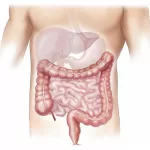A recent study published in Neurology Open Access has found a significant connection between smoking and unexplained strokes in younger adults, particularly in males and individuals aged 45 to 49. The study highlights the increased risks associated with smoking, particularly heavy smoking, and its potential role in cryptogenic strokes—strokes with no known cause.
A cryptogenic stroke is a type of ischemic stroke caused by a blockage of blood flow, though the specific cause of the blockage remains unclear. Symptoms can include weakness, trouble speaking, and vision problems. While most strokes occur after the age of 65, recent research suggests an increasing prevalence of unexplained strokes in younger populations.
Dr. Phillip Ferdinand, MBChB MRCP, of Keele University in the United Kingdom and a member of the American Academy of Neurology, emphasized the importance of evaluating smoking as a potential risk factor for younger individuals. “While smoking has long been linked to ischemic stroke, little is known about how smoking affects people under 50, especially in those with unexplained stroke,” said Dr. Ferdinand. “Our study found that smoking may be a key factor.”
Research Findings
The study analyzed data from 546 individuals aged 18 to 49 who had experienced an unexplained stroke and compared them with 546 individuals of the same age and sex who had not suffered a stroke. Participants provided information about their smoking habits, alcohol use, education level, physical activity, and other health conditions.
Key findings include:
- 33% of individuals who had an unexplained stroke were smokers, compared to 15% of those who had not experienced a stroke.
- After adjusting for factors such as education level, alcohol use, and blood pressure, researchers determined that smokers had more than twice the risk of experiencing an unexplained stroke compared to non-smokers.
- Male smokers had more than three times the risk, while individuals aged 45 to 49 had nearly four times the risk.
- Heavy smokers—those who had smoked more than 20 packs per year—faced more than four times the risk of unexplained stroke compared to non-smokers.
- The highest risk group was male heavy smokers, who had nearly seven times the risk, followed by individuals aged 45 to 49 with nearly five times the risk.
Public Health Implications
The study underscores the importance of public health initiatives aimed at reducing smoking rates, particularly among younger populations. “Our findings suggest that continued public health efforts around preventing smoking, especially heavy smoking, may be an important way to help reduce the number of strokes happening to young people,” said Dr. Ferdinand.
Study Limitations
One limitation of the study is that it primarily focused on individuals of white European backgrounds, meaning the results may not be generalizable to other populations. Further research is needed to explore whether these findings apply across different ethnic and racial groups.
Conclusion
The study provides strong evidence linking smoking, particularly heavy smoking, to unexplained strokes in younger adults. As public health experts continue efforts to reduce smoking rates, this research serves as an important reminder of the serious health risks associated with tobacco use.
Disclaimer: This article is for informational purposes only and does not constitute medical advice. Readers should consult a healthcare professional for medical concerns and before making any health-related decisions.











